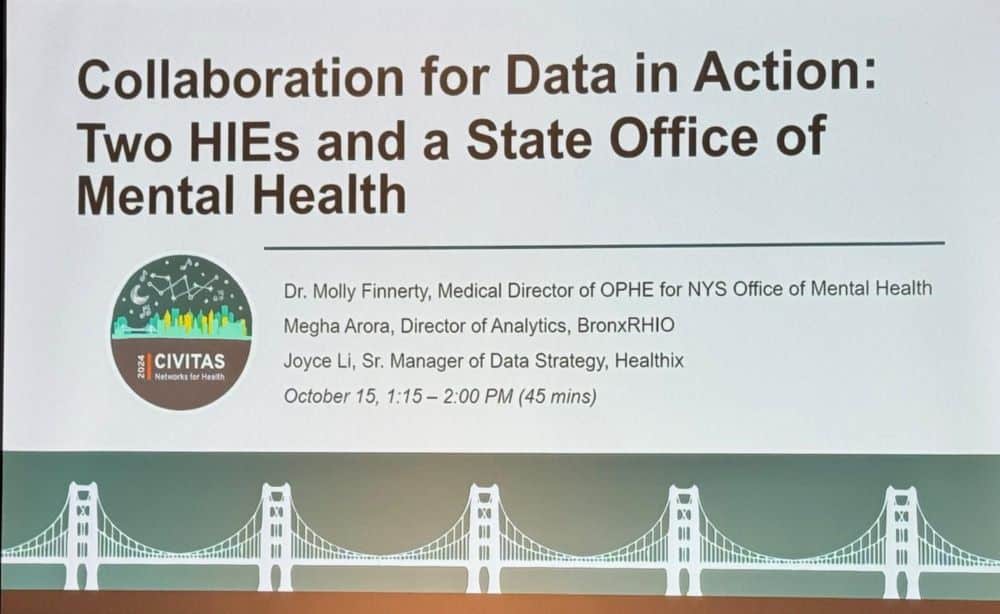
This Civitas session showcased an innovative partnership driving real change in New York’s mental health system. With over 900,000 individuals served annually, the New York State Office of Mental Health (OMH) needed better data to inform policy, reduce provider burden, and improve mental health care outcomes across the state.
Historically, OMH’s data reporting was manual, error-prone, and often delayed, particularly for crisis services in emergency and inpatient settings. To address these issues and revolutionize policy analysis, OMH joined forces with BronxRHIO and Healthix, two HIEs covering large Bronx and New York City areas. This partnership aimed to consolidate real-time hospital data, reduce manual reporting, and streamline public health policy analysis.
Dr. Molly Finnerty (NYS OMH) underscored the pivotal role of real-time HIE data in reducing manual entry, enabling instant policy analysis, and ultimately enhancing care for mental health crises. She outlined OMH’s vision to extend participation to outpatient mental health providers and enhance reporting through existing HIE infrastructure.
Megha Arora (BronxRHIO) shared how the collaboration defined reporting criteria to create a comprehensive, real-time dataset. The critical step? Applying standardized privacy protocols and including all related emergency department and inpatient admissions.
Joyce Li (Healthix) addressed the challenges, such as delayed diagnosis codes and variations in provider workflows that can slow down data flow. Healthix worked to normalize data to USCDI standards, ensuring better quality and consistency for mental health reporting.
This innovative data-sharing partnership is laying the groundwork for better-informed public health policy and more efficient service delivery. By embracing real-time data from HIEs, OMH can now make more accurate, timely decisions that reduce the burden on providers while delivering more effective care for New Yorkers in need.
New York’s approach to mental health data integration shows that collaboration across agencies and HIEs can overcome technical and operational challenges, transforming how we deliver and evaluate public health services.



